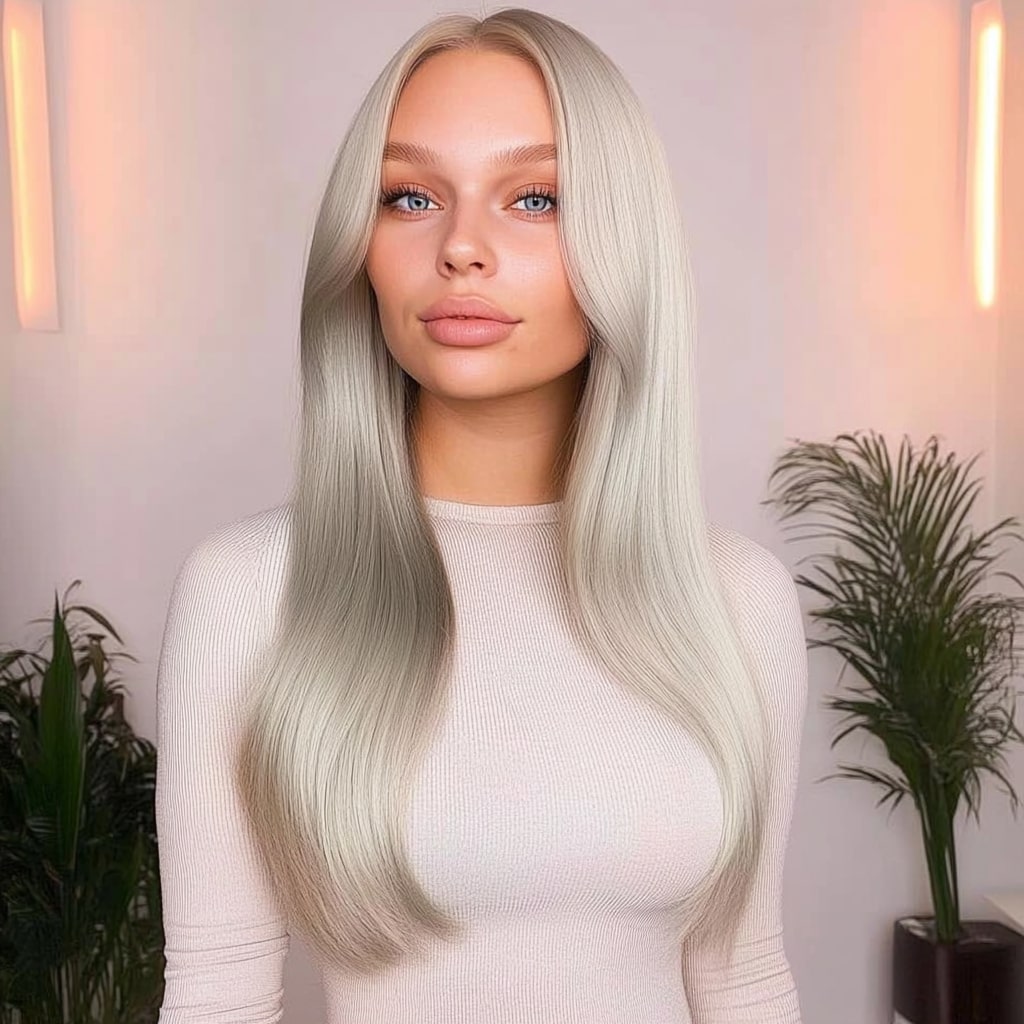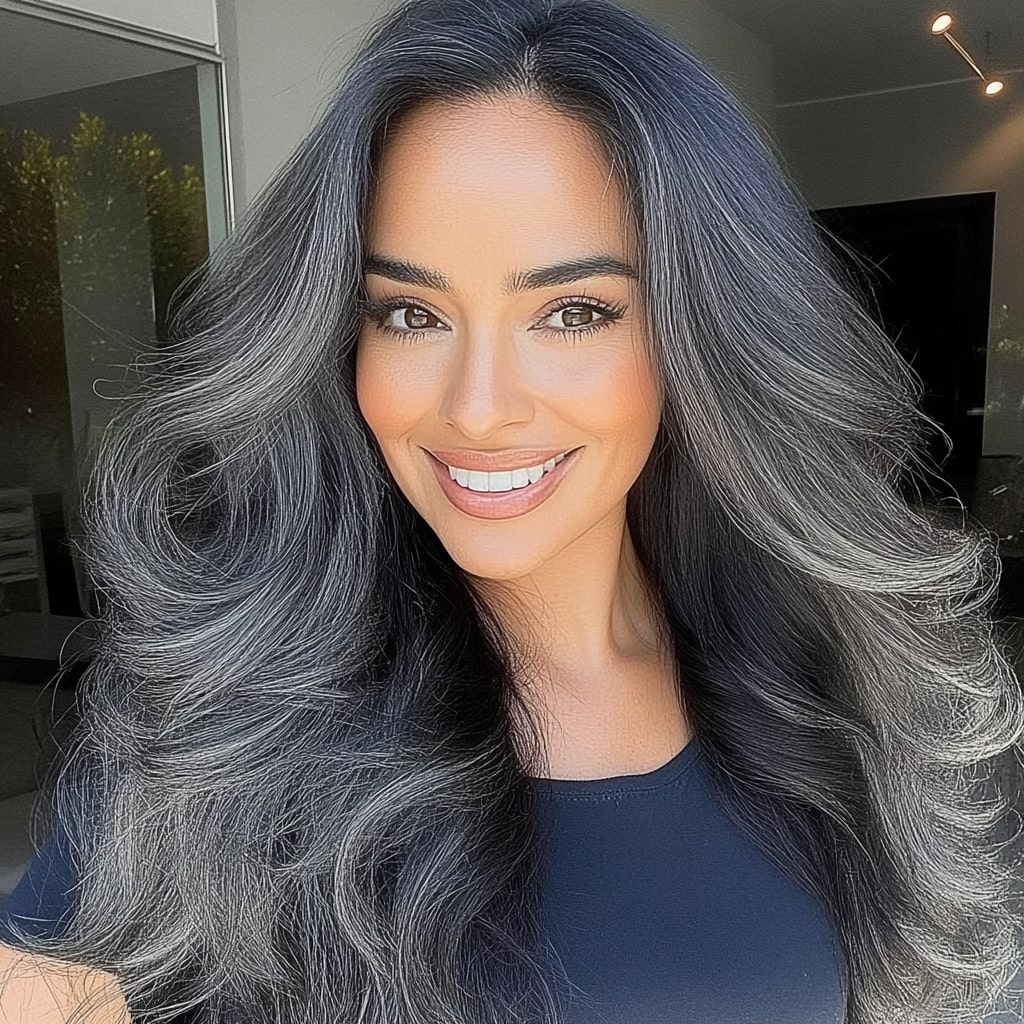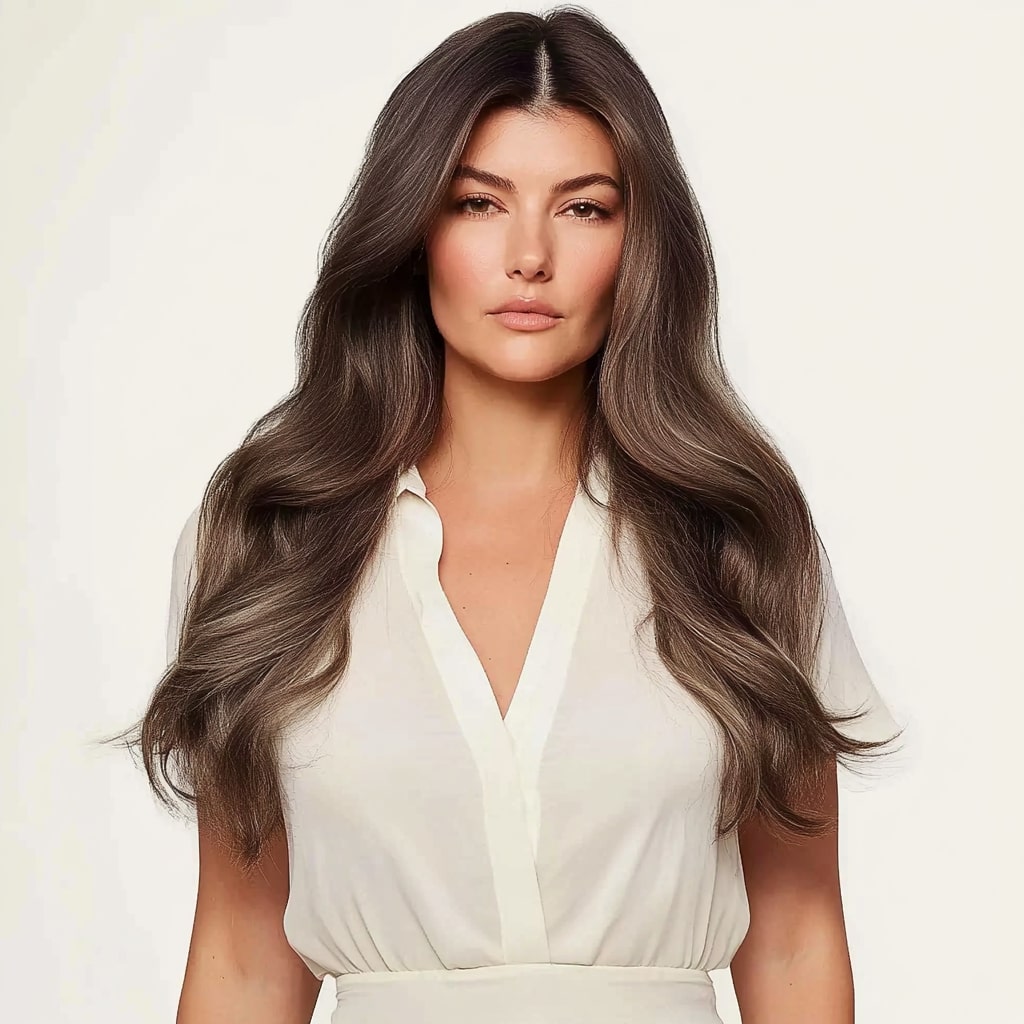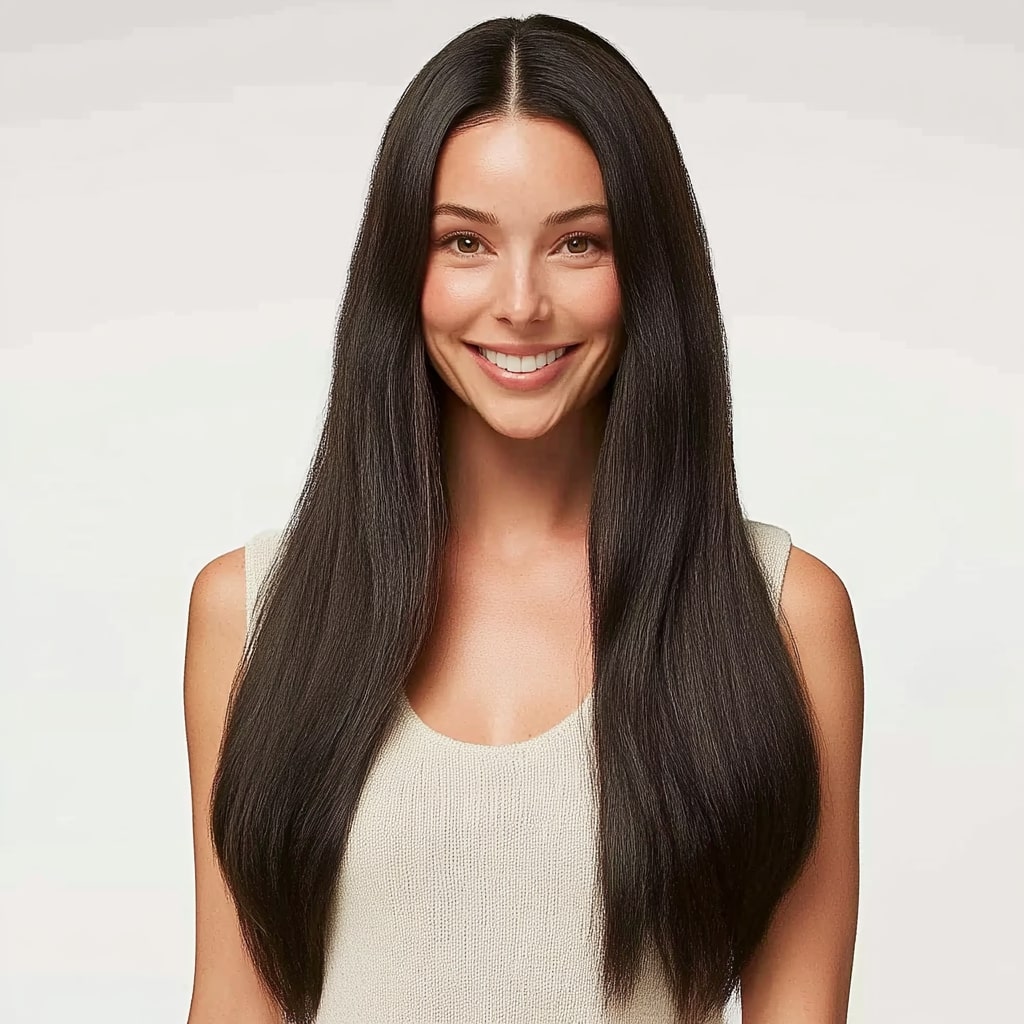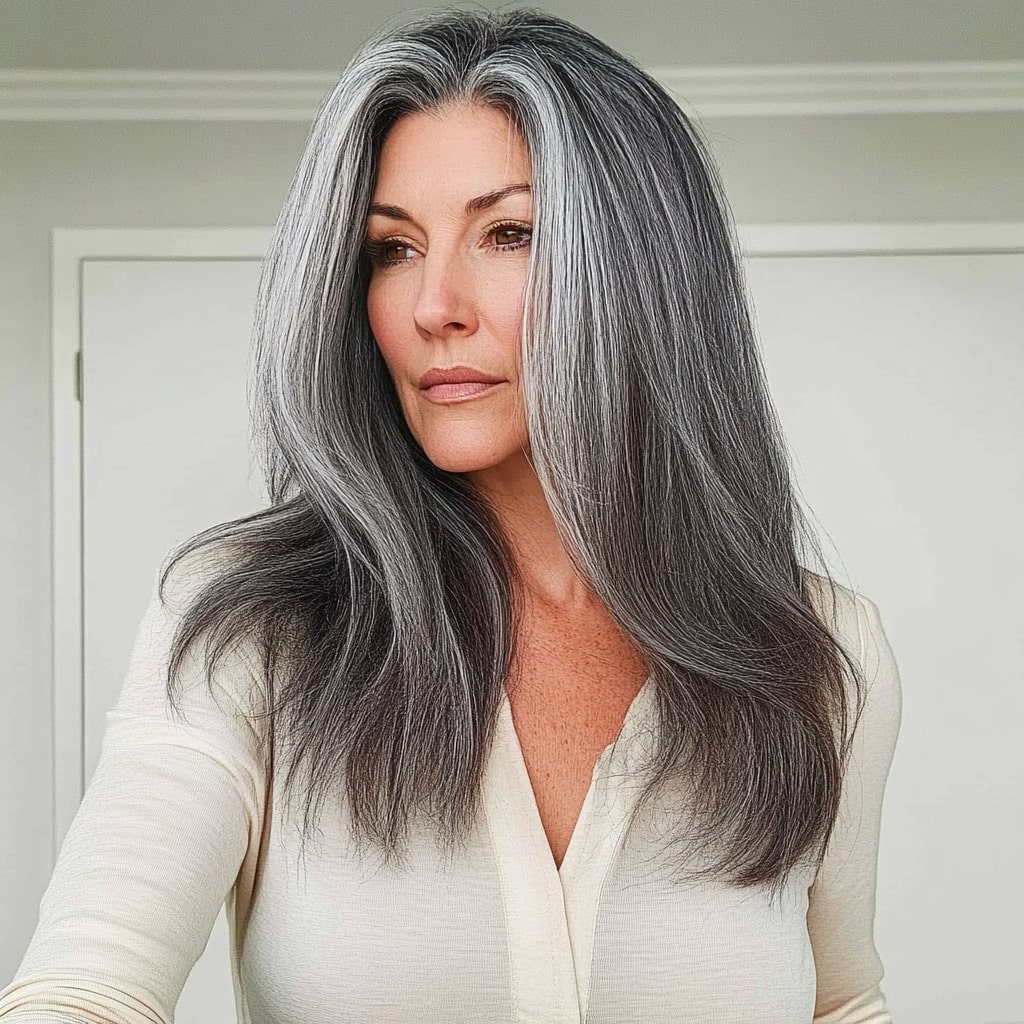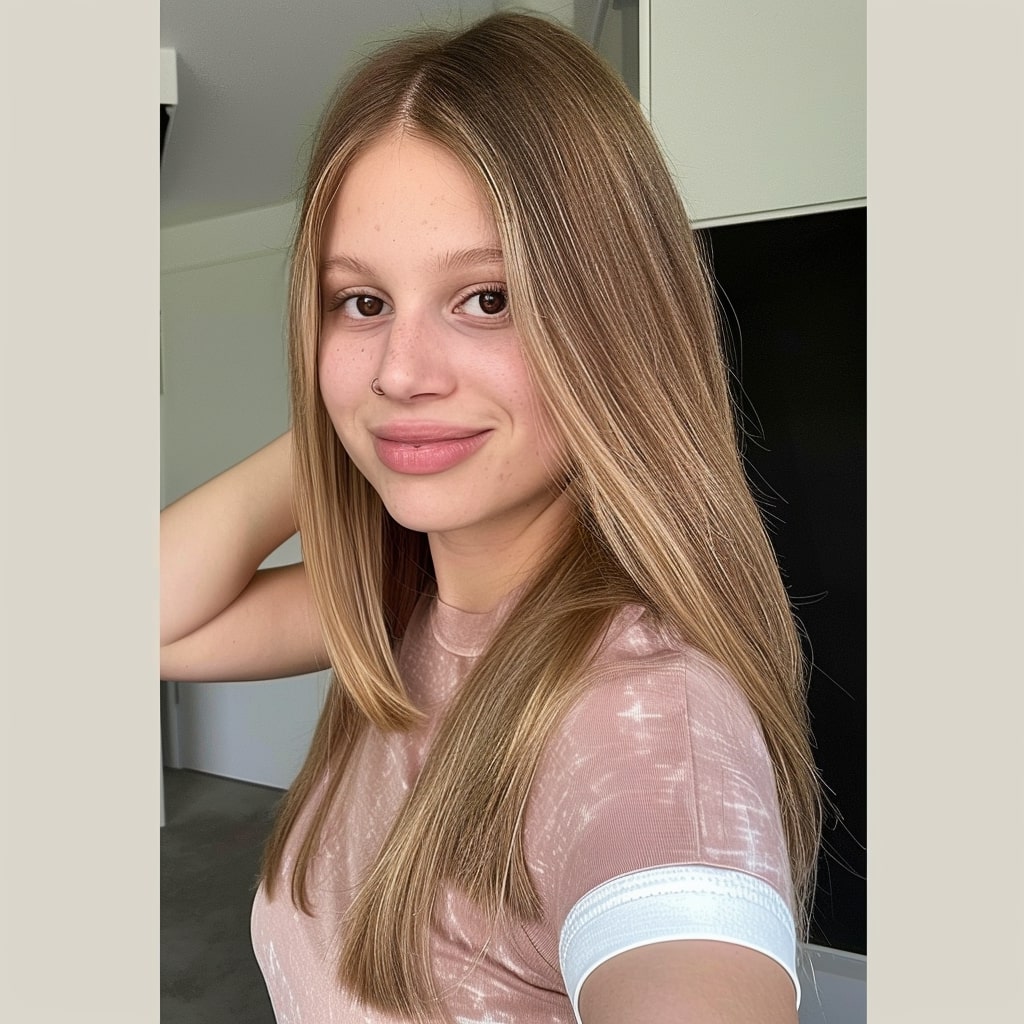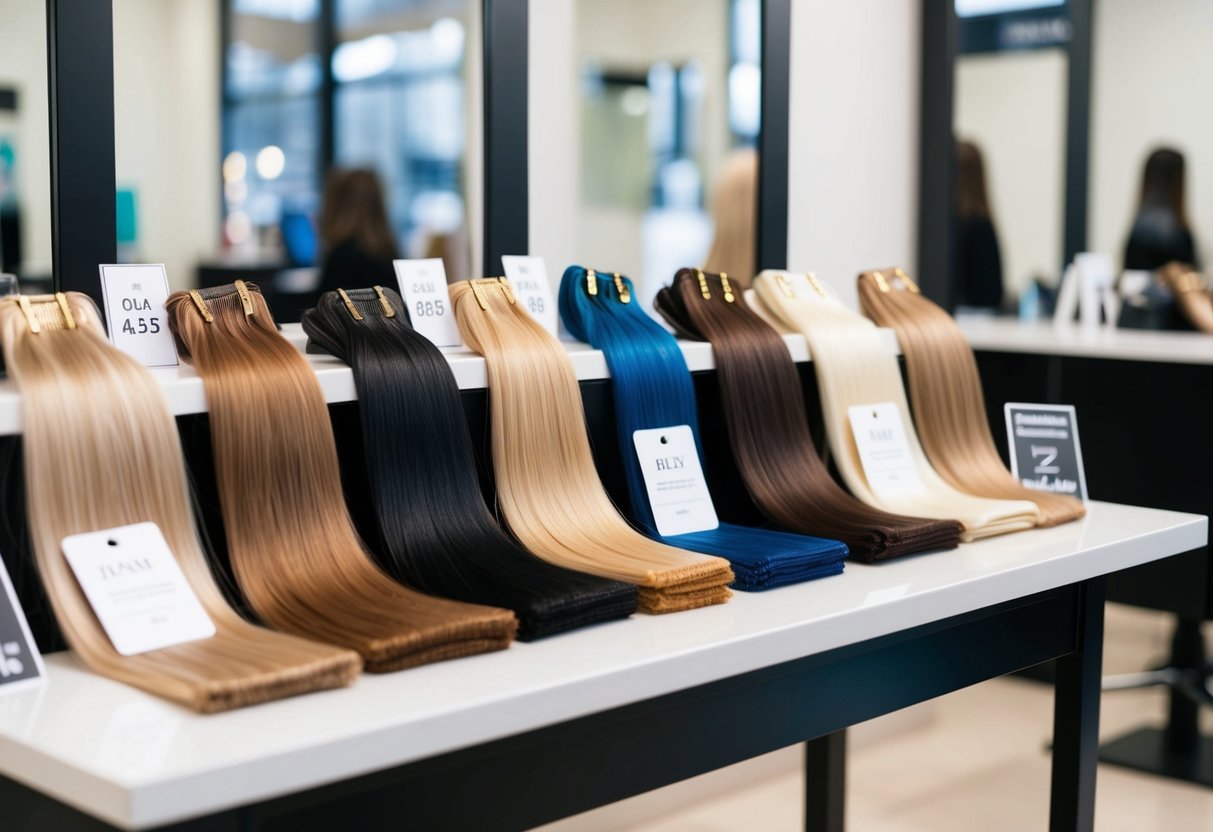Caring for Your Hair: When to Take a Break from Extensions
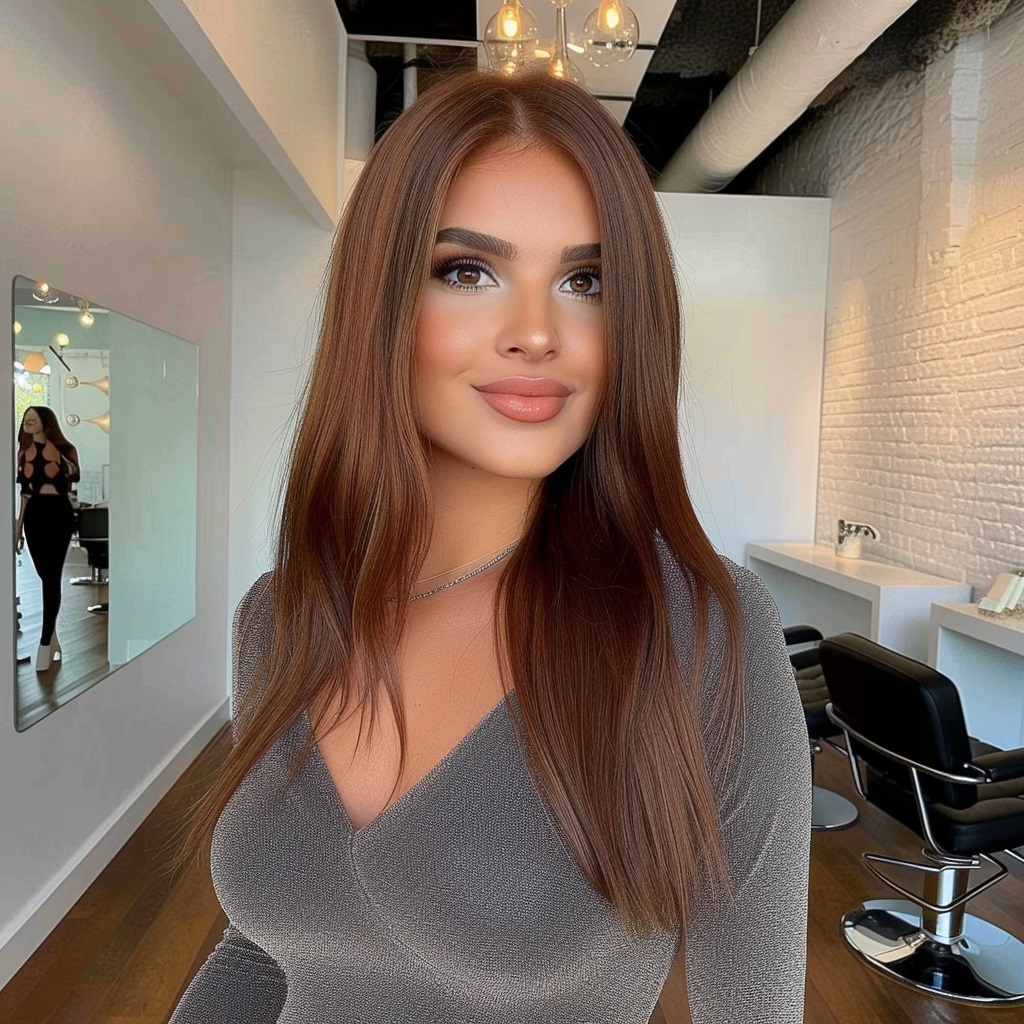
Key Takeaways
- Variety of Extensions: Explore different types of hair extensions, such as clip-in, tape-in, and sew-in, available in synthetic, human, and Remy hair.
- Signs of Stress: Recognize when your hair needs a break due to signs like tension alopecia, scalp irritation, or increased shedding.
- Importance of Care: Maintain the longevity and appearance of your extensions with routine washing, conditioning, and proper storage.
- Professional Guidance: Consult professionals for correct installation, maintenance, and when experiencing any signs of damage.
- Alternating Extensions: Switch between types and lengths of extensions to prevent damage and keep your styling options fresh.
Introduction
Hair extensions are a fantastic way to enhance volume, length, and style instantly. At USA Hair, we understand the transformation that extensions like our XO Tara Hair, XO Quality Hair, and Sam Conan brands can provide. Whether you choose clip-ins, tape-ins, or any other type of our extensive range, extensions can offer versatility and excitement to your hair styling routine.
However, as with any good thing, it’s crucial to use hair extensions wisely to maintain the health and vitality of your natural hair. In this guide, we'll explore the signs that your hair might need a break from extensions and discuss how to keep both your hair and extensions in top condition. Join us as we delve into the world of hair extensions, ensuring that your experience is not only beautiful but also beneficial to your hair's long-term health.
Understanding Different Types of Hair Extensions
At USA Hair, we offer a diverse selection of hair extensions, each suited for different styles, comfort levels, and attachment preferences. Here’s a brief overview of each type to help you choose the best option for your needs:
-
Clip-In Extensions: These are temporary extensions that can be easily clipped in and out of your hair. Ideal for special occasions or infrequent use, clip-ins are a low-commitment way to experiment with length and volume.
-
Invisible Wire Extensions: A single piece of hair extension is attached to a thin, invisible wire, which sits on your head like a halo. This type is perfect for those seeking a quick and easy application with minimal strain on natural hair.
-
Tape-In Extensions: Tape-ins are semi-permanent and involve pre-taped wefts of hair being glued to your natural hair. They require professional installation and periodic maintenance but provide a more lasting solution.
-
Ponytail Extensions: These are designed to be worn as a ponytail, offering an instant boost to your hairstyle’s volume and length. They are straightforward to attach and ideal for a quick style enhancement.
-
Fusion Extensions: Utilizing a heat-adhesive bond, these extensions are individually bonded to the hair, offering a very natural look and feel. They are among the most durable types but require professional application.
-
Micro Loop Extensions: These involve small loops at the top of the extension that are pulled through your natural hair and then clamped down with a special tool. They are less damaging than some other types but still offer a permanent solution.
-
Nano Rings Extensions: Similar to micro loops, these use even smaller rings and are typically less visible and less likely to cause damage. They are ideal for those with finer hair.
-
Sew-In Weaves Extensions: Hair wefts are sewn into cornrowed natural hair. This type is mostly used by those with thicker, coarser hair textures and offers a highly secure attachment.
-
Hair Toppers: These are specifically designed to add volume and coverage at the top of the head and are an excellent choice for those with thinning hair.
-
Hair Wigs: Offering complete coverage, wigs can be used for style flexibility or as a solution for hair loss. They range from synthetic to high-quality Remy hair wigs.
Each type of extension comes in various qualities, including synthetic, human, and Remy hair, and lengths ranging from 14 to 28 inches, catering to different needs and preferences. Understanding the specific benefits and care requirements of each can help you decide when it might be time to give your natural hair a break from extensions.
Signs Your Hair Might Need a Break from Extensions
Using hair extensions can bring joy and variety to your styling routine, but it's essential to recognize when your natural hair needs a rest. Here are key signs indicating that it might be time to take a break from hair extensions:
-
Tension Alopecia: If you notice hair thinning around the areas where extensions are applied, such as the hairline or scalp, this could be a sign of tension alopecia. This condition results from constant pulling on the roots, leading to hair loss.
-
Scalp Irritation: Redness, itching, or flaking on the scalp can be caused by the weight or material of the extensions. It's crucial to listen to these cues from your body and allow your scalp time to recover.
-
Increased Shedding: Some hair shedding is normal, but if you notice excessive shedding when you remove your extensions, this might be a sign that your hair and scalp are under stress from the weight or tension of the extensions.
-
Breakage: Visible signs of breakage or shorter hair around areas of frequent extension use can indicate that your hair is becoming weaker. Breakage typically occurs from the mechanical strain extensions can put on natural hair.
-
Difficulty Styling: If styling your hair becomes increasingly difficult due to tangles, matting, or general manageability issues, it could be due to the prolonged use of extensions affecting your hair's natural texture and health.
-
Overall Hair Health Deterioration: When your hair feels drier, looks duller, or becomes more brittle with the consistent use of extensions, it’s a clear indication that your natural hair is suffering from the lack of proper air circulation and natural oil distribution.
Taking timely breaks from extensions can prevent these issues from becoming severe and will support the long-term health and beauty of your natural hair. Next, we'll look at how different hair qualities affect your scalp and hair health, ensuring you make informed decisions for both style and well-being.
The Impact of Different Hair Qualities on Your Scalp and Hair Health
Choosing the right type of hair extensions not only affects how natural they look and feel but also plays a crucial role in maintaining the health of your hair and scalp. At USA Hair, we offer three primary types of hair quality: synthetic, human, and Remy hair. Each has its benefits and considerations:
-
Synthetic Hair: These extensions are made from fine plastic fibers designed to mimic human hair. While synthetic hair is the most affordable option, it is less durable and cannot withstand heat styling, which can limit styling options. It is also heavier than human hair, which could cause more strain on the natural hair if worn extensively.
-
Human Hair: A more natural option, human hair extensions can be styled, washed, and treated just like your own hair. They are lighter than synthetic options and tend to blend more seamlessly with your natural hair. However, they require more maintenance and can be more expensive.
-
Remy Hair: Considered the highest quality of hair extensions, Remy hair maintains the cuticle's direction, giving a more natural appearance and reducing tangling and matting. Remy hair extensions are the best choice for long-term wear, as they cause the least damage to natural hair when cared for properly.
Considerations for Scalp and Hair Health
When wearing extensions, regardless of the type, it is essential to consider their impact on your scalp and hair health:
-
Weight and Tension: Heavier extensions can pull on the roots, leading to tension alopecia if used continuously without breaks. Opting for lighter, high-quality extensions like Remy hair can mitigate this risk.
-
Hygiene and Scalp Care: Extensions require regular cleaning and proper drying to prevent buildup and potential infections. Neglecting scalp care can lead to issues like dandruff, itchiness, and even fungal infections.
-
Installation and Removal: Ensure that any semi-permanent extensions (like tape-ins or sew-ins) are applied and removed by professionals to minimize damage. Incorrect application or removal can lead to significant hair breakage and loss.
-
Overall Hair Care: Using extensions of any type demands an increase in hair care efforts. Regular conditioning treatments, gentle styling, and periodic breaks can help maintain the integrity of both the extensions and your natural hair.
By understanding and considering these factors, you can enjoy the aesthetic benefits of extensions while keeping your natural hair and scalp healthy. Next, we will discuss how to properly care for and maintain your hair extensions to maximize their lifespan and the health of your hair.
Proper Care and Maintenance of Hair Extensions
To ensure that both your hair extensions and natural hair remain in excellent condition, proper care and maintenance are essential. Here’s how to take care of different types of extensions to extend their life and maintain your hair health:
-
Routine Washing: Keep both your natural hair and extensions clean by washing them regularly. Use sulfate-free shampoos and conditioners that are gentle and moisturizing. Remember to carefully detangle extensions before and after washing to prevent matting.
-
Deep Conditioning: Apply deep conditioning treatments to your extensions as you would with your natural hair, especially if they are human or Remy hair. This keeps them soft, manageable, and shiny. Avoid conditioning products near the bonds or tapes to prevent them from slipping or loosening.
-
Drying Techniques: Always gently towel-dry your hair and avoid rubbing the extensions harshly. Use a low heat setting when blow-drying, and consider using a heat protectant spray to shield the hair from heat damage. Whenever possible, let the extensions air dry.
-
Regular Brushing: Brush your extensions with a soft bristle brush or a wide-tooth comb several times a day to prevent tangling. Be gentle around the roots to avoid pulling at the bonds.
-
Nighttime Care: Before going to bed, loosely braid or tie your hair in a soft ponytail to prevent tangling. Consider using a silk or satin pillowcase to reduce friction and prevent breakage.
-
Professional Maintenance: For semi-permanent extensions like tape-ins or sew-ins, regular maintenance appointments with a professional are crucial. They will check the integrity of the attachments and adjust them as needed to prevent damage to your natural hair.
-
Avoid Harsh Chemicals: Minimize the use of heavy styling products and avoid chemical treatments like coloring or perming on extensions unless they are 100% human hair. Always consult a professional before attempting any chemical treatment.
-
Proper Storage: When not in use, store clip-in and other removable extensions properly. Keep them in a dry, flat position, ideally in a silk or satin bag to protect them from dust and moisture.
By following these care tips, you can keep your hair extensions looking fresh and vibrant while also ensuring the health and vitality of your natural hair. This not only enhances the lifespan of your extensions but also helps in maintaining the overall aesthetic appeal of your hair styling choices.
Alternating Types and Lengths of Extensions for Hair Health
To maximize both the style benefits and health of your hair when using extensions, consider alternating the types and lengths of extensions you use. This strategy can help mitigate the risk of damage and allow your natural hair to recover between styles. Here’s why and how to implement this approach:
-
Reducing Scalp Stress: Constant use of the same type of extensions, especially those that are heavy or tightly attached, can put continuous stress on the same areas of your scalp. By switching between lighter and heavier extensions, or between different attachment methods, you give your hair a break from constant tension.
-
Preventing Hair Fatigue: Just as muscles need rest after exercise, your hair benefits from a break from constant styling pressures. Alternating extension types (such as switching from tape-ins to clip-ins) allows your natural hair to rest and rejuvenate.
-
Enhancing Style Versatility: Different types of extensions offer different styling options. For instance, you might use long, flowing 28-inch Remy hair extensions for special occasions, but switch to 14-inch clip-ins for everyday wear. This not only keeps your look fresh but also reduces wear and tear on your natural hair from constant styling and manipulation.
-
Adapting to Seasonal Needs: Your hair’s needs can change with the seasons. During warmer months, lighter and shorter extensions might be more comfortable, while longer, fuller extensions can be ideal for colder months. Adjusting the type and length of extensions seasonally can also be gentler on your hair.
-
Consulting with Professionals: It's advisable to consult with hair care professionals at USA Hair or a trusted stylist about the best types and schedules for alternating extensions. They can provide personalized advice based on the condition of your natural hair and your styling needs.
By being strategic about how and when you use different types of hair extensions, you can enjoy the aesthetic benefits they offer while maintaining the health and integrity of your natural hair. This approach ensures that you can continue using hair extensions long-term without compromising your hair’s natural beauty and strength.
When to Consult a Professional
While hair extensions can be a fantastic way to enhance your look, it’s important to recognize when professional advice or intervention is necessary. Consulting with a hair care professional can help prevent damage and ensure that your extensions look their best. Here are situations where professional guidance is recommended:
-
Choosing the Right Extensions: Before investing in a new set of extensions, especially if you’re trying a type you haven’t used before, consulting a professional can be invaluable. They can help you select the right type, color, and length to match your natural hair and lifestyle needs.
-
Initial Installation: Many types of hair extensions, particularly those like tape-ins, sew-ins, fusion, and micro loops, require professional installation to ensure that they are attached correctly and securely without damaging your natural hair.
-
Maintenance and Upkeep: Regular maintenance appointments are crucial for semi-permanent extensions. A professional can help with adjustments, repositioning, and ensuring that your natural hair and scalp remain healthy.
-
Noticing Signs of Damage: If you experience symptoms such as excessive shedding, breakage, scalp irritation, or discomfort from your extensions, it’s important to see a professional. They can assess whether the extensions need to be removed or if they can adjust the application method to alleviate stress on your hair.
-
Removal of Extensions: Removing hair extensions, especially those that are bonded or sewn in, should be done by a professional to prevent cutting or damaging your natural hair.
-
Restorative Treatments: Professionals can also provide treatments to help restore your natural hair’s health if it has been affected by extended wear of extensions. These treatments might include deep conditioning, trimming to remove split ends, or scalp treatments.
By leveraging the expertise of a professional, you can enjoy the benefits of hair extensions while maintaining the health and beauty of your natural hair. This proactive approach ensures that you get the most out of your hair enhancement investments. Next, we'll conclude with a summary of how to balance the use of hair extensions with maintaining healthy, natural hair.
Conclusion
Hair extensions offer an excellent way to change your look and boost your confidence by adding length, volume, and style. At USA Hair, we take pride in providing a wide range of high-quality extensions, from clip-ins to sew-ins, and everything in between, all available in synthetic, human, and Remy hair options. By understanding the different types of extensions and recognizing the signs that your hair might need a break, you can enjoy the benefits of versatility without compromising the health of your natural hair.
Remember, the key to maintaining both beautiful extensions and healthy natural hair lies in proper care, regular maintenance, and alternating the types of extensions used. Don’t hesitate to consult a professional for advice on choosing, applying, and caring for your extensions to ensure the best results.
We hope this guide helps you navigate the exciting world of hair extensions while keeping your hair’s health a top priority. Enjoy exploring new looks and styles with confidence, knowing that you are taking the right steps to protect and nurture your natural hair.
FAQ on Hair Extensions
-
What types of hair extensions are available at USA Hair?
- We offer a wide range of extensions including clip-in, invisible wire, tape-in, ponytail, fusion, micro loop, nano rings, sew-in weaves, hair toppers, and wigs. These are available in synthetic, human, and Remy hair qualities.
-
How do I know if I need a break from hair extensions?
- Signs include noticeable thinning, scalp irritation, increased shedding, difficulty styling, and overall deterioration in hair health. If you experience these symptoms, it might be time to give your hair a rest.
-
How often should I wash my hair extensions?
- It depends on the frequency of use, but generally, wash them every 10 to 20 wears or when there is a noticeable buildup of products.
-
Can I style my hair extensions with heat tools?
- Yes, if they are made of human or Remy hair. Synthetic extensions, however, should not be exposed to high temperatures as they can melt or get damaged.
-
How long do hair extensions last?
- The lifespan varies depending on the type of extension and how well they are maintained. Generally, human hair extensions can last up to a year or more with proper care, while synthetic ones may last a few months.
-
Can hair extensions damage my natural hair?
- If applied, maintained, and removed correctly, extensions should not damage your hair. Ensure professional help with semi-permanent types and avoid keeping extensions in longer than recommended.
-
How do I choose the right color of hair extensions?
- Match the extension color to the mid-length and ends of your hair. At USA Hair, we offer a variety of shades, and our team can help you select the perfect match.
-
What is the best way to store my hair extensions when not in use?
- Keep them in a cool, dry place away from direct sunlight. Brush them out, ensure they are completely dry, and store them flat or hang them up to prevent tangling.
-
Are hair extensions suitable for everyone?
- Hair extensions can be used by most people, but those with extremely fine or brittle hair should consult a professional to discuss the best type that won’t strain their natural hair.
-
How can I make my hair extensions last longer?
- Avoid sleeping in them if they are clip-ins, minimize heat styling, use sulfate-free products, and follow a regular washing and conditioning routine. Also, regular maintenance checks with a professional can help extend their life.
These FAQs should help you get the most out of your hair extensions while keeping your natural hair healthy and strong.

 My Store Credit
My Store Credit
 Buy Again
Buy Again
